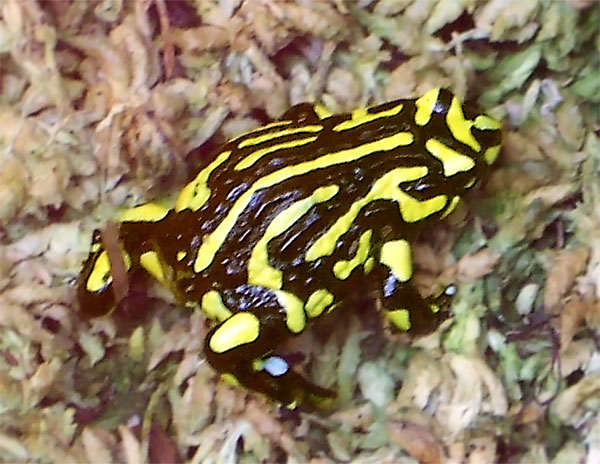Facts About Corroboree frog
The corroboree frogs, comprising two species—the southern corroboree frog and the northern corroboree frog—are small, vividly colorful, and poisonous amphibians native to the Southern Tablelands of Australia. Unlike most poisonous frogs, which derive their toxins from their diet, these unique frogs synthesize their own poison.
The northern corroboree frog is slightly smaller and features narrow yellow to greenish stripes, whereas the southern species is somewhat larger. These fascinating creatures are found in small, specific patches spanning approximately 400 square kilometers in the sub-alpine regions of the Australian Capital Territory and southern New South Wales.
Reaching sexual maturity at around four years old, corroboree frogs exhibit intriguing breeding behaviors. Male frogs construct chamber nests near shallow pools and use their calls to attract females. After the female deposits her eggs, the male fertilizes them in situ. The tadpoles develop within the eggs until they are ready to hatch. Their diet primarily consists of beetles, mites, ants, and insect larvae.
What distinguishes corroboree frogs is their ability to produce their own poison, an alkaloid called pseudo-phrynamine, which they utilize to deter predators. They hibernate during the winter and require very specific conditions for successful breeding. Unfortunately, the southern corroboree frog is critically endangered, with fewer than 200 individuals remaining, and the northern corroboree frog is also at risk, classified as endangered.
Several factors have contributed to the decline of corroboree frog populations, including habitat destruction, feral animals, drought, ultraviolet radiation, and a harmful infection caused by the chytrid fungus. To combat these threats, various conservation efforts are underway, such as captive breeding programs and initiatives led by national parks authorities. The Amphibian Research Centre has initiated a rescue program, and researchers are continuously seeking the most effective strategies to prevent the extinction of these remarkable frogs.
